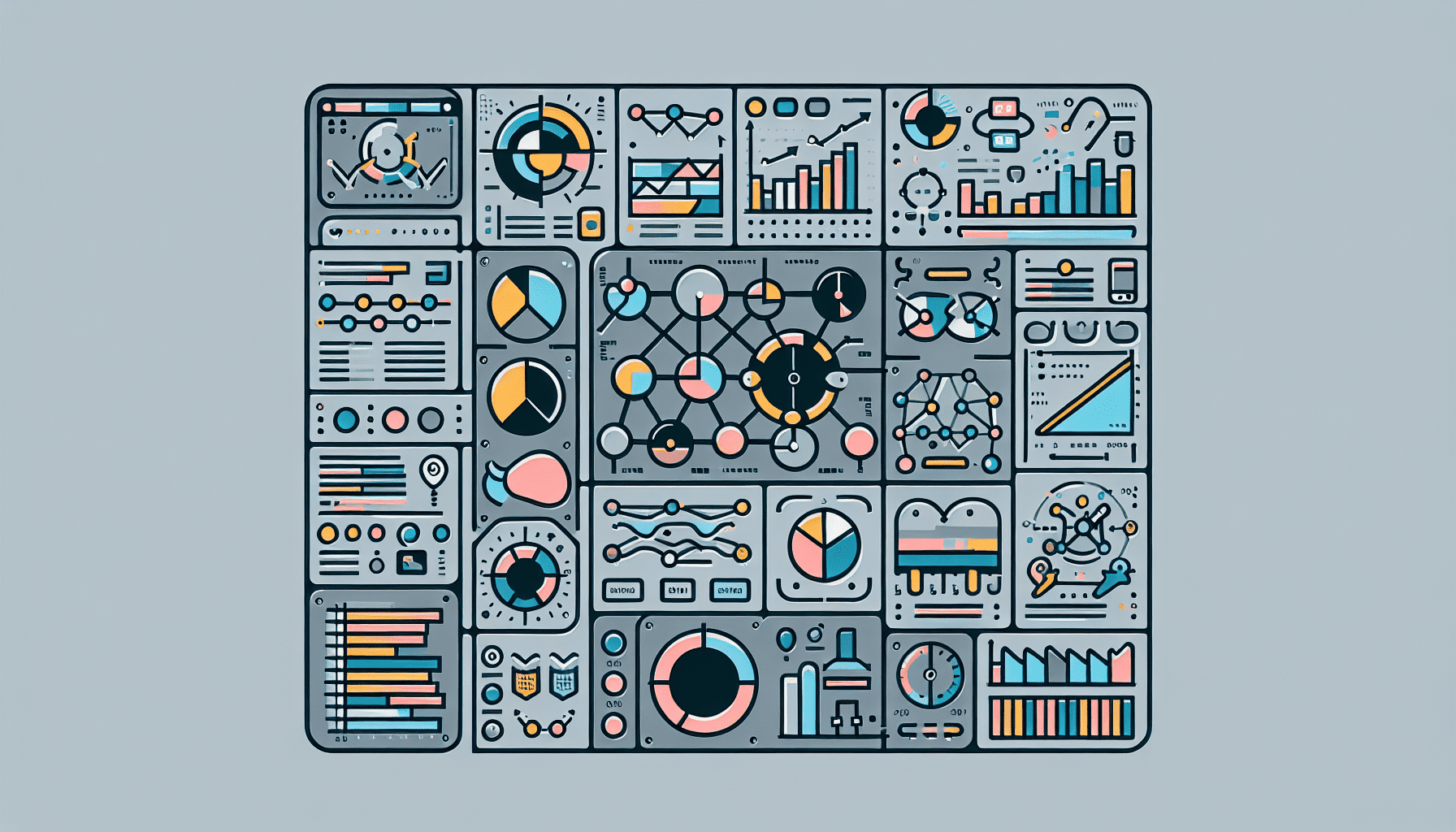Dashboard Reporting

Briefly Summarized
- Dashboard reporting is a visual representation of a company's key performance indicators (KPIs) and other critical data.
- It provides an at-a-glance view of business processes, enabling quick decision-making and performance tracking.
- Dashboards are often interactive, allowing users to drill down into data for deeper analysis and insights.
- They are typically web-based and linked to data sources that update regularly, ensuring that the information is current.
- Well-known examples include Google Analytics dashboards and various COVID-19 trackers that became prominent during the pandemic.
In the realm of data analysis, dashboard reporting has emerged as a pivotal tool for businesses to monitor, analyze, and visualize their operations and performance metrics. This comprehensive guide will delve into the intricacies of dashboard reporting, its significance, best practices, and how it can be leveraged to enhance business intelligence.
Introduction to Dashboard Reporting
A dashboard in the business context is akin to an automobile's instrument panel, offering a real-time snapshot of the organization's health and performance. It is a graphical user interface that displays key performance indicators (KPIs) and other vital data points relevant to business objectives or processes. The term "dashboard" itself is derived from the automotive dashboard, which allows drivers to monitor the major functions of their vehicle at a glance.
The Importance of Dashboard Reporting
Dashboard reporting is not just about presenting data; it's about presenting it in a way that is both accessible and actionable. By consolidating data from various sources into a single, visual interface, dashboards save time and reduce the complexity of data analysis. This enables business owners and stakeholders to make informed decisions swiftly, a critical advantage in today's fast-paced business environment.
Characteristics of Effective Dashboard Reporting
An effective dashboard should have the following characteristics:
- Clarity: The dashboard should display data in a clear and understandable manner.
- Relevance: The data shown must be relevant to the user's role and the decisions they need to make.
- Timeliness: Dashboards should provide the most current data available to support up-to-date decision-making.
- Interactivity: Users should be able to interact with the dashboard to explore data and gain deeper insights.
- Customization: The ability to customize dashboards for different users or departments is crucial for addressing specific needs.
Types of Dashboards
Dashboards can be categorized based on their purpose and the level of detail they provide:
- Strategic Dashboards: Provide a high-level view of the organization's overall health and long-term performance.
- Analytical Dashboards: Offer detailed data analysis and are typically used by data analysts to uncover trends and insights.
- Operational Dashboards: Focus on short-term performance and day-to-day operations, often updating in real-time or near real-time.
Building a Dashboard: Best Practices
To create a dashboard that is both effective and efficient, consider the following best practices:
- Define Clear Objectives: Understand what you want to achieve with your dashboard.
- Identify Key Performance Indicators (KPIs): Select metrics that accurately reflect the performance and objectives of the business.
- Choose the Right Visualization Tools: Use graphs, charts, and other visualization tools that best represent your data.
- Ensure Data Accuracy: The data displayed must be accurate and reliable.
- Simplify the Design: Avoid clutter and focus on simplicity to enhance user experience.
- Enable Drill-Down Capabilities: Allow users to dig deeper into the data for more detailed analysis.
- Implement Responsive Design: Ensure the dashboard is accessible on various devices, including mobile phones and tablets.
Tools
There are numerous tools available for creating dashboards, each with its own set of features and capabilities. Some of the top dashboard reporting tools include:
- Coupler.io: A tool that allows for easy integration of various data sources into a single reporting platform.
- Looker Studio: Formerly known as Google Data Studio, it provides robust data visualization and dashboard creation capabilities.
- Google Analytics 4: Offers comprehensive web analytics dashboards for tracking website performance.
- Tableau: A leading data visualization tool that enables the creation of interactive and shareable dashboards.
Conclusion

Dashboard reporting is an indispensable component of modern business intelligence. By providing a centralized, visual representation of data, dashboards empower organizations to make data-driven decisions efficiently and effectively. As businesses continue to navigate an increasingly data-rich environment, the ability to quickly interpret and act on data through dashboard reporting will remain a key competitive advantage.
FAQs on Dashboard Reporting
Q: What is dashboard reporting? A: Dashboard reporting is the practice of using visual representations, such as charts and graphs, to display key performance indicators and other important data to facilitate quick decision-making and performance tracking.
Q: Why is dashboard reporting important? A: It saves time, simplifies complex data analysis, and supports informed decision-making by presenting data in an accessible and actionable format.
Q: What are some common features of a dashboard? A: Common features include interactivity, real-time data updates, customization options, and the ability to drill down for more detailed analysis.
Q: Can dashboards be customized for different users? A: Yes, dashboards can and should be customized to meet the specific needs of different users or departments within an organization.
Q: What tools can be used to create dashboards? A: There are many tools available for dashboard creation, including Coupler.io, Looker Studio, Google Analytics 4, and Tableau, among others.
Sources
- Dashboard (business)
- What is Dashboard Reporting? - Jaspersoft
- Dashboard Reporting: Examples & Best Practices - Qlik
- What Is Dashboard Reporting? 20/20 Vision For Your Business
- What is a dashboard? A complete overview - Tableau
- What Is Dashboard Reporting? Features, Types, And examples
- What Is Dashboard Reporting: 101 Guide | Databox Blog
- 26 Dashboard Report Best Practices: Key Principles + Example
- Best 15 Dashboard Reporting Tools in 2023 | Coupler.io Blog
- Why a reporting dashboard is critical to your business intelligence ...
- 8 Dashboard Report Best Practices to Successfully Leverage Data